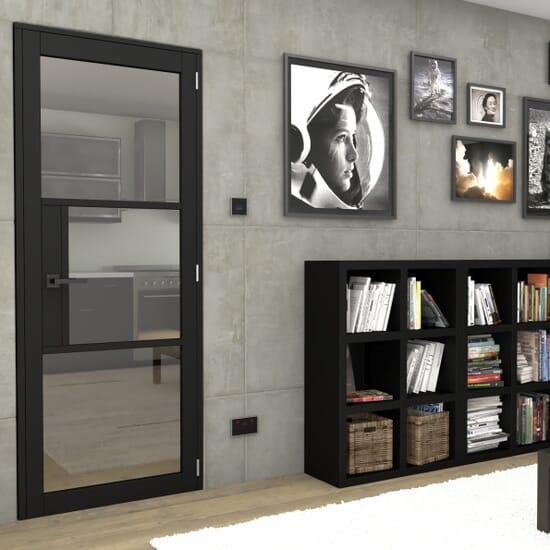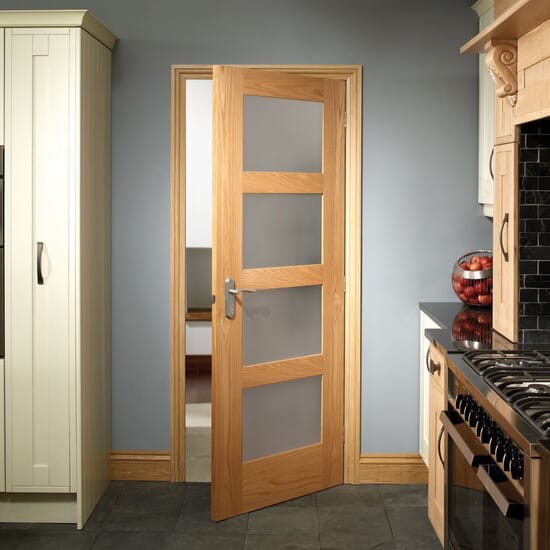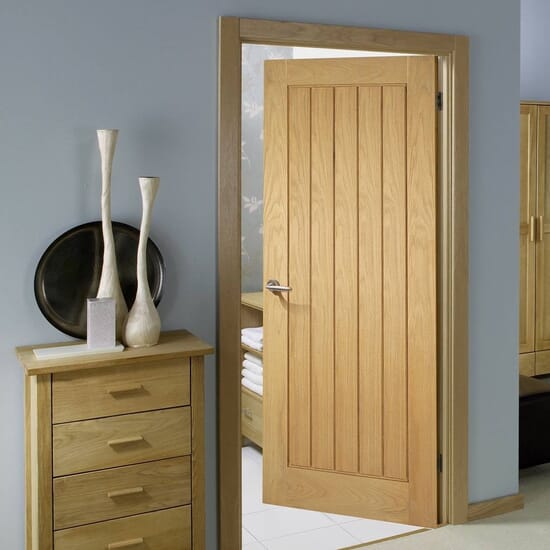What Is A Door Architrave?
Over the years, they have become something which you can use to make a grand statement around your doors. After all, why have a plain trim when you can have beautifully decorated mouldings?
In essence they are decorated strips of wood covering any gaps between the door frame and the wall on each side of the door opening. You will need three strips for each side of the door to attach to the two vertical edges and the horizontal top edge. To make the square (90 degree) angles you will need to mitre each piece of architrave to 45 degrees so that a right angle is made when they are joined together. If your door frame is not exactly square (and many aren’t), you can adjust this angle when you cut to ensure a matching join.
DIY stores stock a range of architrave in varying widths and designs, usually in lengths of about 2m for you to cut to size yourself. More elaborate designs can be ordered from various bespoke online suppliers.
Once in place, it is normal for the architrave to be set back from the frame by around 5mm so that the action of the hinges is not impeded when the door is opened and closed.
How To Remove Door Architraves
If you’ve decided to upgrade the architraves around your door, you’ll probably need to remove the old one first. This is a relatively straightforward task but here's a quick guide on how to remove it.
You’ll need a chisel and hammer.
Insert a sharp chisel into the joint between the face of the door frame and the architrave.
Lever it out gently – you will need to repeat this all around the frame, inching it out a little at a time until the whole piece comes away.
Take care not to injure yourself on used nails sticking out of the old architrave.
How To Cut Door Architraves To Size
Tools required: strips of architrave, square, hammer, tape measure, mitre box, oval nails, centre punch, sandpaper, decorator’s caulk, tenon saw, safety goggles.
- First mark the door frame all round at 5mm from the edge so that you have an accurate guideline to work from when fitting the architrave. Extend these lines both horizontally and vertically at both top corners so that they form a cross. This will allow for easier checking of where to start the mitre cut.
- Measure the heights of both door frame sides and the width of the top edge. Now add 5mm to each door height and 10mm (5mm for each side) to the door width to account for the 5mm set back from the door frame edge.
- Cut the floor ends of the two vertical pieces square then place each in turn against the door frame in line with your 5mm guideline markings. The moulded edge should face inwards toward the door opening and frame. Transfer the position where the vertical and horizontal markings meet onto the architrave. This shows where to begin with the mitre cuts.
- To cut the mitres you will need a mitre box set to 45 degrees to ensure an accurate cut with your saw. Once cut, lightly sand to remove roughness. It is possible to buy an electric mitre saw where you can set the required angle for the cut. While this may be quicker and easier, you may not want the expense of a quality tool if this is not a job you intend repeating. You could consider hiring a power tool if you really don’t want to do this job by hand.
If you haven’t cut mitres before, it is a good idea to use an offcut piece of wood to practise on, just so that you can envisage correctly how the pieces will fit together once assembled. It can sometimes be hard to imagine this before making the cuts and it is very easy to cut in the wrong direction or with the architrave the wrong way round.
How To Fix The Door Architrave To The Wall
- You should now attach the vertical pieces in place using three or four 50mm lost head round or oval nails. Don’t hammer them in all the way yet as you are going to use these pieces to determine the position of the horizontal architrave.
- Using the measurements previously taken for the horizontal piece, make the first mitre cut. Then check by holding it up to the two vertical pieces that you have marked the place for the second mitre cut accurately before going ahead and making this cut.
- The horizontal piece should now slot into place above the two verticals. As before, use three or four nails hammered in halfway to hold it in place.
- When you are happy with the appearance, you can hammer in the nails fully, adding another three or four on each vertical piece. Then sink the nails below the surface using a nail punch and hammer.
- You can now use decorator’s caulk to fill any small gaps and to cover the sunken nails. Sand lightly when dry. This will give a professional finish when painted. You can also use the caulk to fill any gaps between the architrave and the wall in places where the wall may not have been completely flat.
We hope this guide has helped you understand how you can fix an architrave without professional help! You can view our full range of internal doors here and if you have questions about any of our products, get in touch as our team is always happy to help!







